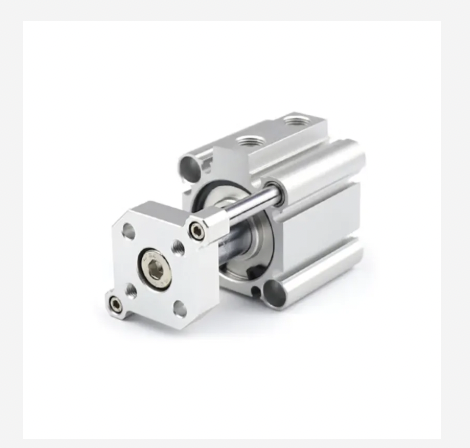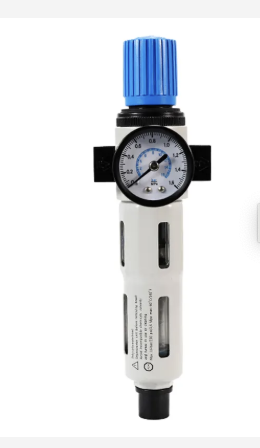Förstå den revolutionerande påverkan av moderna pneumatiska kopplingar
Den industriella världen har varit med om en betydande förändring i hur kompressorsystem byggs och underhålls. I frontlinjen i denna utveckling finns pneumatiska push-in-kopplingar , som har revolutionerat sättet ingenjörer och tekniker närmar sig pneumatiska kopplingar. Dessa innovativa komponenter har blivit standardval inom olika industrier, från tillverknings- och bilindustrin till livsmedelsindustrin och läkemedelsproduktion.
Uppkomsten av pneumatiska snabbkupplingar har löst många långvariga utmaningar inom montering av pneumatiska system. Traditionella anslutningsmetoder krävde ofta specialverktyg, betydande teknisk kompetens och stor installationstid. Dessa moderna kopplingar har dock förenklad hela processen och erbjuder en lösning som kombinerar tillförlitlighet med oöverträffad användarvänlighet.
Designexcellens i moderna pneumatiska system
Avancerade teknikfunktioner
Den sofistikerade designen av pneumatiska snabbkupplingar innehåller flera innovativa element som säkerställer optimal prestanda. Kragen, som vanligtvis är tillverkad av högkvalitativ rostfri stål, har precisionsbearbetade tänder som greppar röret säkert utan att skada det. Detta kompletteras av specialtillverkade O-ringar som skapar en lufttät tätning och effektivt förhindrar läckage även vid höga tryck.
Fittingarnas kropp är vanligtvis tillverkad av nicklade mässing eller konstruerade polymerer, material som specifikt valts för sin hållbarhet och korrosionsmotstånd. Detta noggrant valda material säkerställer långsiktig tillförlitlighet och bevarar systemets integritet även i krävande industriella miljöer.
Kompakt och utrymmeseffektiv design
Modern pneummatiska push-in-fittingar är utformade med utrymmesoptimering i åtanke. Deras kompakta profil gör det möjligt att installera dem i trånga utrymmen där traditionella fittingar skulle vara opraktiska. Denna utrymmeseffektiva design är särskilt värdefull i automatiserade system där komponenttätheten är hög och utrymmet är dyrt.
Den minskade storleken kompromattar inte funktionen; tvärtom förbättrar den ofta systemets effektivitet genom att minimera flödesbegränsningar och minska den totala vikten på konstruktionen. Denna noggranna balans mellan storlek och prestanda representerar en betydande utveckling inom konstruktion av pneummatiska system.

Installations- och driftsfördelar
Tids- och kostnadseffektivitet
En av de mest betydande fördelarna med pneumatiska snabbkupplingar är den dramatiska minskningen av installations tid. Till skillnad från traditionella gängade anslutningar som kräver att man lindar PTFE-band och försiktigt åtdrår, behöver man bara sätta i röret i en snabbkuppling tills det når stopppunkten. Denna enkla process kan minska installations tiden med upp till 75 % jämfört med konventionella metoder.
Den förenklade installationsprocessen innebär också lägre arbetskostnader och minimerad system driftstopp under underhåll eller ändringar. Dessutom innebär borttagandet av specialverktyg från installationsprocessen ytterligare kostnadsbesparingar för organisationer.
Förbättrad säkerhet och tillförlitlighet
Designen av pneumatiska snabbkupplingar innefattar flera säkerhetsfunktioner som säkerställer säkra anslutningar. Käkelmekanismen ger visuell bekräftelse på korrekt installation, vilket minskar risken för ofullständiga anslutningar som kan leda till systemfel. Dessutom har många modeller säkerhetsklämmor eller ringar som förhindrar oavsiktlig koppling, vilket ger en extra säkerhetsnivå.
Dessa kopplingar behåller sin täthet även vid vibrationer och termisk cykling, förhållanden som ofta får traditionella anslutningar att lossna med tiden. Denna tillförlitlighet innebär minskade underhållskrav och förbättrad systemtillgänglighet.
Mångsidighet och Ansökan Räckvidd
Branschspecifika lösningar
Pneumatiska snabbkupplingar finns i ett omfattande utbud av konfigurationer för att möta olika industriella krav. Från raka och vinkelkopplingar till mer komplexa fördelare och flerportsdesign kan dessa kopplingar anpassas till praktiskt taget alla pneumatkraftsystem. Denna mångsidlighet gör dem idealiska för både nya installationer och systemuppgraderingar.
Olika industrier har specifika krav, och tillverkare har svarat genom att utveckla specialvarianter. Till exempel har livsmedelsklassade kopplingar material som uppfyller FDA:s regler, medan tunga versioner finns tillgängliga för högtrycksapplikationer i produktionsmiljöer.
Materiell kompatibilitet
Modern pneumatiska snabbkupplingar är utformade för att fungera med ett brett utbud av rörmaterial, inklusive nylon, polyuretan och fluoropolymerer. Denna kompatibilitet säkerställer att systemdesigners kan välja det mest lämpliga rörmaterialet för deras specifika applikation utan att kompromissa med anslutningens tillförlitlighet.
Möjligheten att arbeta med olika rörmaterial underlättar också systemoptimering, vilket tillåter ingenjörer att balansera faktorer såsom flexibilitet, tryckmotstånd och kemisk kompatibilitet beroende på applikationskrav.
Underhåll och hållbarhetsöverväganden
Förenklade underhållsprocedurer
Designen av pneumatiska snabbkoplelement förenklar underhållsprocedurer avsevärt. När systemmodifieringar eller reparationer är nödvändiga kan komponenter snabbt kopplas bort med hjälp av frigöringsmekanismen, och nya kopplingar kan göras lika enkelt. Denna egenskap är särskilt värdefull i produktionsmiljöer där det är avgörande att minimera driftstopp.
Den reducerade komplexiteten hos dessa kopplingar innebär också färre potentiella felpunkter, vilket leder till mer pålitlig långsiktig drift. Regelbundna systemkontroller kan utföras mer effektivt, eftersom synlig kontroll av kopplingarna är enkel och tydlig.
Långsiktiga prestationsegenskaper
Hållbarheten hos pneumatiska snabbkupplingar bidrar till exceptionell långsiktig prestanda. De högkvalitativa material som används i deras konstruktion motstår nedbrytning från miljöpåverkan, medan den exakta konstruktionen säkerställer konsekvent drift över en längre tid. Många tillverkare rapporterar en livslängd som överstiger tiotusentals anslutningscykler.
Denna långlivdighet innebär minskade utbyteskostnader och mer förutsägbara underhållsplaner. Den tillförlitliga prestandan bidrar också till att upprätthålla systemeffektivitet, eftersom de täta anslutningarna förhindrar luftläckage som annars skulle kunna leda till ökad energiförbrukning.
Vanliga frågor
Hur säkerställer jag korrekt installation av pneumatiska snabbkupplingar?
För att säkerställa korrekt installation, skär först röret kvadratiskt med lämpliga verktyg. Sätt i röret kraftigt i kopplingen tills du känner att det når stopppunkten, dra sedan lätt bakåt för att bekräfta att det är säkert låst. Kontrollera alltid om det finns några skador på röret eller kopplingen innan installation, och följ tillverkarens specifika riktlinjer för din kopplingsmodell.
Vilka tryckområden kan pneumatiska snabbkupplingar hantera?
Standard pneumatiska snabbkupplingar hanterar vanligtvis arbetryck från vakuum till 150 PSI, även om specifika områden varierar beroende på tillverkare och modell. Det finns också varianter för högre tryck för applikationer som kräver upp till 300 PSI eller mer. Verifiera alltid tryckklassningen för din specifika koppling och säkerställ att den uppfyller dina systemkrav med en lämplig säkerhetsmarginal.
Kan pneumatiska tryckinmonterade anslutningar återanvändas?
Ja, de flesta pneumatiska snabbkupplingar är utformade för flera användningscykler. Det är dock viktigt att kontrollera både kopplingen och röret för slitage eller skador innan återanvändning. Spärrmekanismen och O-ringarna bör kontrolleras på sin integritet, och alla komponenter som visar tecken på slitage bör bytas ut för att upprätthålla systemets tillförlitlighet.

